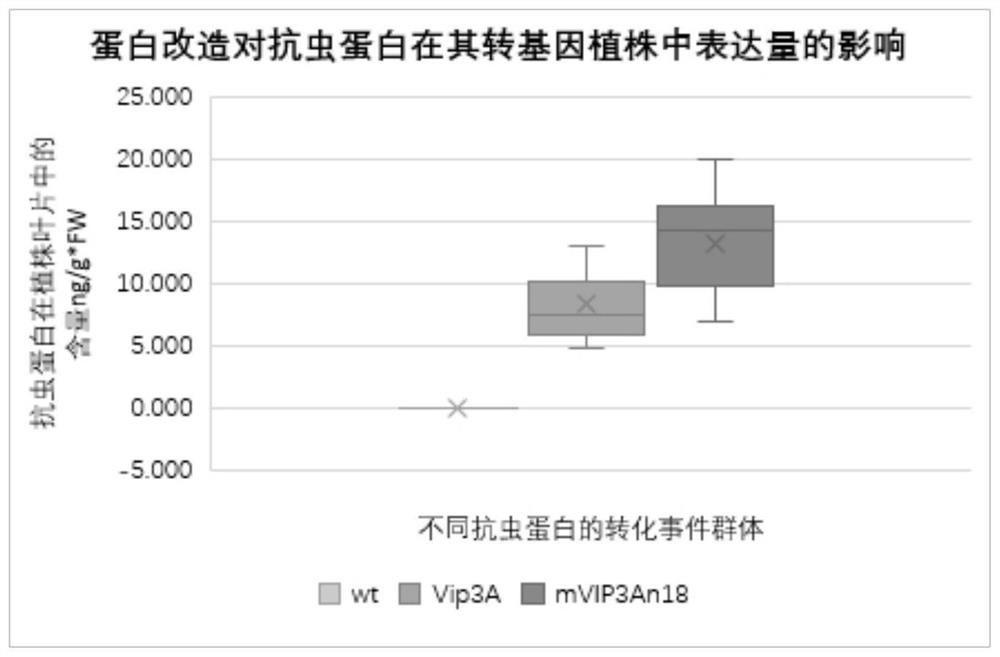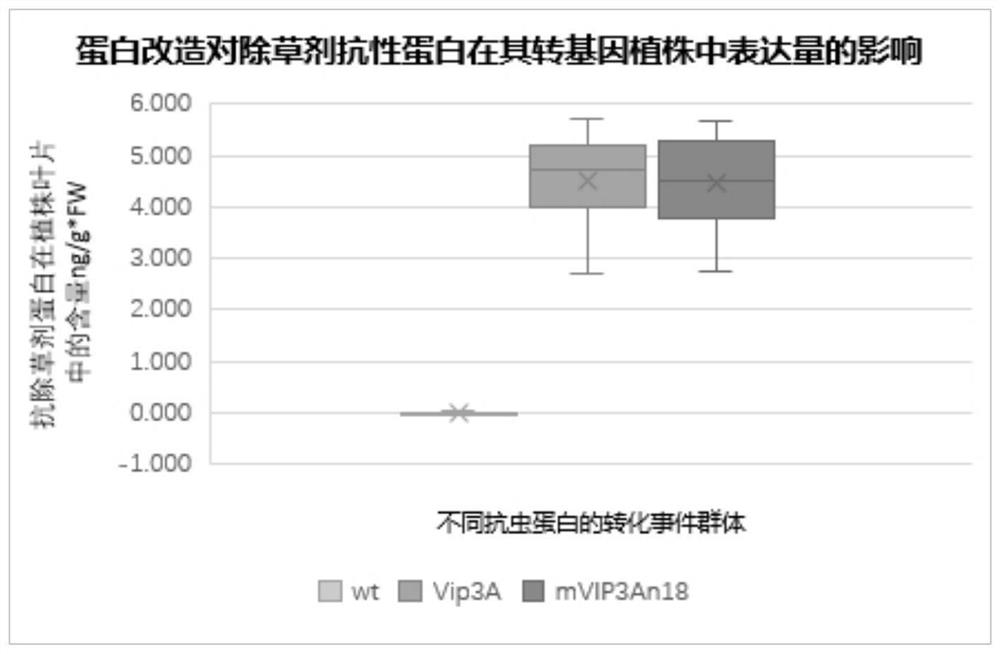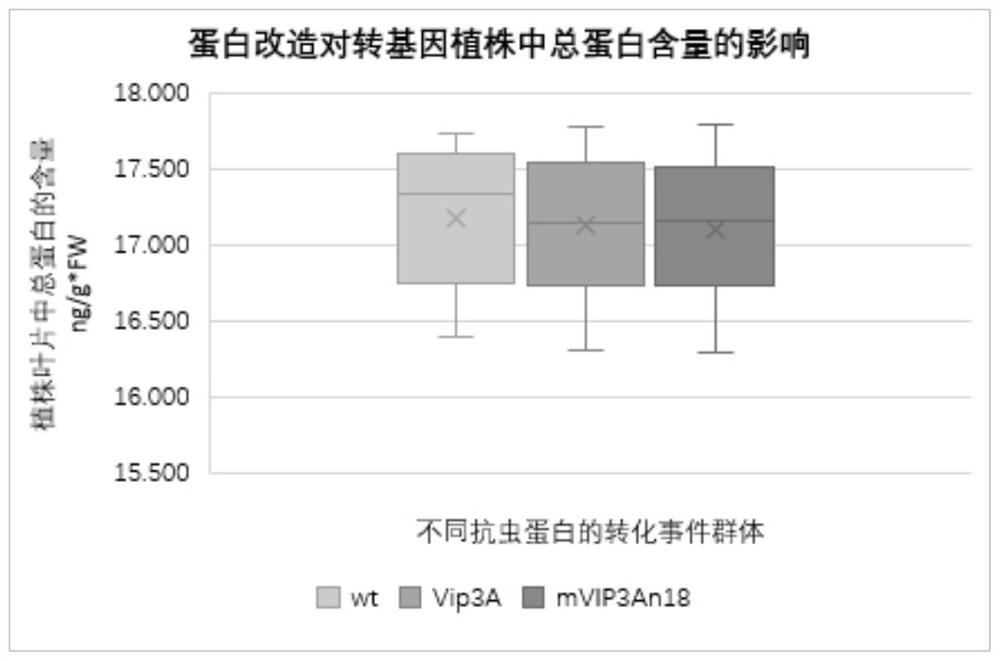A kind of anti-insect protein mvip3an18, coding gene and application
A technology of mvip3an18, encoding gene, applied in the field of genetic engineering and molecular biology, to achieve the effect of enhanced structural stability and high expression
- Summary
- Abstract
- Description
- Claims
- Application Information
AI Technical Summary
Problems solved by technology
Method used
Image
Examples
Embodiment 1
[0033] Example 1: Artificial design of insect-resistant protein mVIP3An18 and synthesis of its coding gene
[0034]1) First, train according to the collected information on the expression levels of various proteins expressed naturally or heterologously in maize cells, and establish a vector machine algorithm model, and use this model to analyze the stability of the simulated natural VIP3A protein in maize leaf cells. The relationship of N-terminal amino acid composition;
[0035] 2) According to the analysis results, firstly, we made three amino acid sequences at the N-terminus of the published natural VIP3A protein on Genbank, which may lead to the removal of the amino acids recognized by ubiquitinase in maize cells, so as to preliminarily reduce its activity in maize cells. The risk of poor stability and low content of expression products in heterologous expression
[0036] 3) According to the simulation results, new parameter settings were made, and the exhaustive method w...
Embodiment 2
[0039] Example 2: Construction of plant expression vectors for two insect-resistant proteins and preparation of genetically transformed engineering bacteria
[0040] 1) Using the commercialized plant expression vector pCAMBIA3301 as the backbone of the plant expression vector, the effects of artificial design and modification on the heterologous expression of insecticidal proteins in maize cells were verified. First, the plant expression vector is digested with restriction enzymes to remove the reporter gene GUS gene contained therein. Next, by adding a restriction endonuclease recognition site at the 5' end of the amplification primer, the same endonuclease recognition site was added to both ends of the coding gene of the natural Vip3A protein and the modified mVIP3An18 protein, respectively Restriction endonuclease digestion was performed, and the resulting cohesive ends were ligated into the commercialized plant expression vector pCAMBIA3301 with the GUS gene removed, and t...
Embodiment 3
[0042] Embodiment 3: Obtaining of corn transgenic plants of two insect-resistant proteins
[0043] The Agrobacterium carrying different vectors prepared in Example 2 is used as the engineered bacterium of genetic transformation, and the young corn embryos 12 days after pollination as the plant receptor material are co-cultured for 3 days in a dark environment, after induced culture and 35mg / After L glufosinate-ammonium resistance screening to generate resistant callus, the callus was differentiated, and the transgenic maize plants with two insect-resistant proteins before and after transformation were finally obtained by PCR detection of the obtained resistant plants.
[0044] In order to study whether the two insect-resistant genes will affect the plant genetic transformation operation, and then increase or reduce the operational difficulty of obtaining its transgenic plants for insect-resistant breeding applications, we repeated the above experiment in three different batche...
PUM
 Login to View More
Login to View More Abstract
Description
Claims
Application Information
 Login to View More
Login to View More - R&D
- Intellectual Property
- Life Sciences
- Materials
- Tech Scout
- Unparalleled Data Quality
- Higher Quality Content
- 60% Fewer Hallucinations
Browse by: Latest US Patents, China's latest patents, Technical Efficacy Thesaurus, Application Domain, Technology Topic, Popular Technical Reports.
© 2025 PatSnap. All rights reserved.Legal|Privacy policy|Modern Slavery Act Transparency Statement|Sitemap|About US| Contact US: help@patsnap.com



